Does Spider Plant Like To Be Root Bound? (+When To Repot)
Spider plants are easy to grow and sturdy plants that can grow pretty large if the right conditions are provided to them. Some people prefer to keep them in small pots as they beleive that spider plants like to be root-bound. But is it true? Do spider plants like to be root bounded? Let’s find out!
The spider plant prefers to remain slightly root-bound and will continue to grow until the roots grow extensively and displace most of the soil, blocking the drainage holes. If the drainage holes are blocked, the water won’t pass through, leading to root rot. At this stage, the spider plant needs to be repotted in another pot.
Even if your spider plant thrived in its current size pot for a year, it would need to be repotted soon. The roots of the spider plants grow pretty fast and will fill the pot fairly quickly.
Once the soil is displaced and the roots have not much space to expand, your plant’s growth will slow down. If you don’t repot your spider plant at this stage, they are likely to start wilting.
But how can you know the right time to repot your spider plant, and how can you save an already root bounded spider plant? Let’s find out!

Please note: Simplify Plants is reader-supported. Some links in the post are affiliate links and I get a commission from purchases made through links in the post.
Do spider plants like being root bound?
No, the snake plant doesn’t like to be root-bound as it can drastically affect the plant’s overall growth. However, if the plant is slightly root-bound, they are more likely to propagate through runners.
When a spider plant is kept in a smaller sized pot, they have limited resources to grow and expand their roots. Let us understand this in simple terms.
When a spider plant is grown in the ground, it has all the available nutrients, space, and other resources to grow and expand their roots and foliage. The plant is likely to develop a solid root structure to support its growth.
However, when we grow the same spider plant in a small pot, they have limited resources to compete with. The plant roots have limited space, and once the roots grow large and displace all the soil in the pot, the growth of the plant will get affected.
As the pot’s soil gets displaced, the plant doesn’t have any medium to hold on to. The capacity to absorb nutrients reduces drastically, and as a result, your spider plant is likely to remain deprived of essential nutrients and water.
That is a perfect recipe for disaster. If you don’t act quickly and repot your plant to a larger size pot, they may start wilting, and it can be a challenge to save them.
How to tell if spider plant needs repotting?

If your spider plant is root bounded, then it will likely need to be repotted soon. There are two ways to check if your spider plant is root bounded or not.
- Look for visual signs.
- Examine the root ball of your spider plant.
If your spider plant is root-bound, the first and foremost signs you will notice will be some visual cues that our plants give us. These include:
- Roots are coming out of drainage holes.
- Plants are looking dehydrated.
- Soil dries up quickly.
- Water drains out almost immediately.
- Droopy leaves
- Stunted growth
- Yellowing of new leaves
If you notice any of these signs, then your plant is likely to be root bound.
If your plants are showing those signs and you find that all other cultural conditions are perfectly inline, then you need to investigate the root ball of your spider plant. To do so, you can follow these simple steps:
- Water the plant thoroughly a night before.
- Lay the pot on its side
- Try to take the plant out but without applying too much force.
- If the plant doesn’t come out, you can use a dull butter knife and run it along the pot’s perimeter. That should loosen up the soil.
- Gently slide the plant out of the pot.
- Examine the root ball and take the necessary steps to fix the issue.
If the roots of your spider plant are tangles up and densely covered, taking the shape and size of the pot, then your plant is likely to root-bound.
| Root Condition | Status |
|---|---|
| Root just began wrapping around the root ball | Slightly root bounded |
| Roots started forming mats around the root ball | Root bounded |
| Roots have formed a solid mat and no soil can be seen | Severely root bounded |
Spider plant can thrive even if it is slightly root bounded. However, if your spider plant is severely root bound you need to repot them soon.
How to save root bound spider plant?
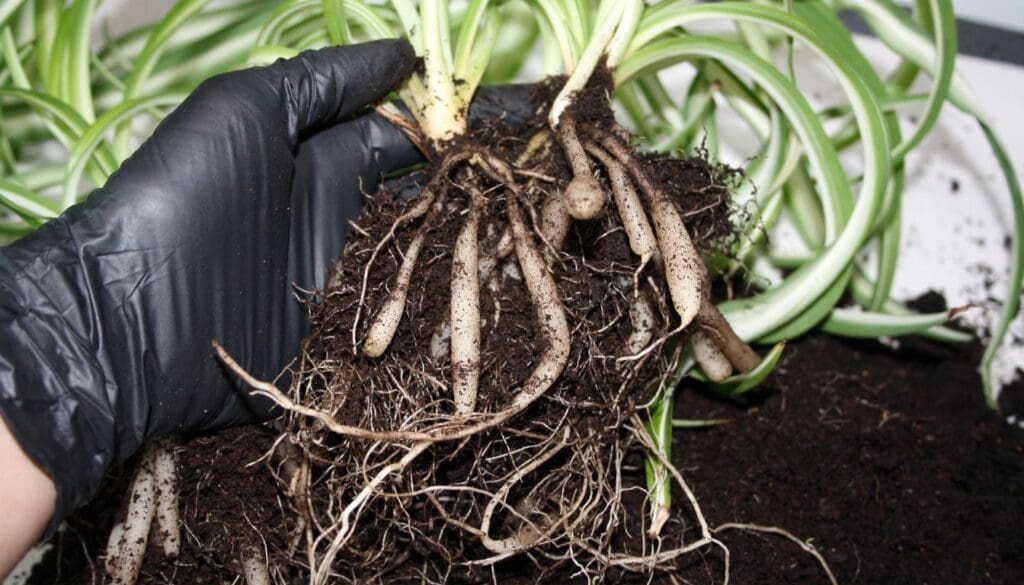
Once you have identified that your spider plant is root bounded, you have two options to deal with the same:
- Repot your spider plant
- Split the spider plant
Although most people prefer to repot the spider plant, some do go with splitting them as well.
By splitting the plants, you can keep the mother plant in the same pot and pot the new plant into another pot. This way, you will have multiple plants to play with as well.
Let us dive into the details of each of them.
Repotting a spider plant
Repotting the spider plant into a larger size pot is one of the preferred ways to deal with a pot bound plant.
As you move the spider plant into a larger size pot, the plant will have more space to grow and expand its roots. You can fill the space with fresh soil that will replenish the nutrients as well.
The process is easy and straightforward:
- Choose an appropriate size pot.
- Lay the pot on its side and try to take the plant out.
- Examine the root ball for damaged roots and trim off any damaged or mushy roots.
- Get rid of any old soil.
- Fill the container with some fresh soil mix(1/3 of the pot).
- Plant your spider plant in and refill fresh soil in the gaps.
Once done, you can water your spider plant and keep them in indirect bright light for healthy growth.
Splitting a spider plant
Sometimes we don’t have an option to repot our spider plant, or maybe we want some more of them, then you can split the mother plant into 2-3 small plants.
Here are the steps you need to follow to repot your spider plant:
- Water the soil thoroughly a day before splitting.
- Take the plant out of the pot and examine the root ball.
- Trim any damaged roots and then carefully look at the roots.
- Take a sharp knife and start dividing the roots and stems into equal parts.
- Carefully try to separate the roots and plants into two or three equal halves and prepare to repot them in separate containers.
- Fill the new pot with fresh soil and start repotting the new plants.
- After repotting, water the plant and move it to a bright spot away from direct sunlight.
You should never split a plant if it looks unhealthy. Always make sure the plant is in good health, and the conditions are just right for things to work smoothly.
How to know when to repot spider plant?
It is recommended that you repot your spider plant every 1-2 years. The roots of the spider plants grow fairly quickly.
So, the plant is like to become slightly root bound within a year. However, the plant will thrive for another year or so before it needs to be repotted.
You shouldn’t repot your spider plant too frequently, as it will impact the plant’s growth. If your spider plant shows severe signs of being root bound, then you might have to consider repotting them sooner.
It is also recommended to repot your spider plant during spring or summer as they lie in the dormant stage during the winter.
Best Soil and pots for the spider plant
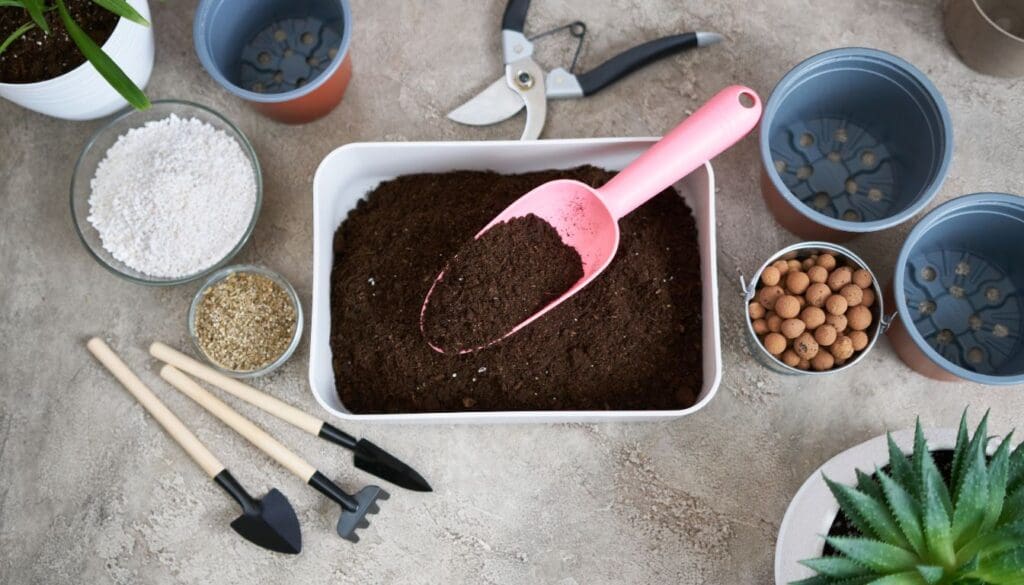
Choosing an appropriate size pot for your snake plant is crucial for healthy growth. You should never go for a pot too big as it will impact the plant’s growth.
A general starting size would be a 4″ pot for a small size plant. As a rule of thumb, you need to upsize the pot with one size larger pot (2-inch) whenever you need to repot your spider plant.
Say your spider plant is currently in a 4″ pot, then you need to repot it to a 6″ pot and then to an 8″ pot and so on.
You can go with a wide variety of pots, including hanging pots made up of plastic or ceramic pots or even terracotta pots.
If you are looking for some containers for spider plants, you can check out ETSY.
Soil is another essential element that we need to get right while repotting the spider plant.
In general, spider plant prefers well-drained and nutrient-rich soil. You can easily create a balanced mix by mixing the following ingredients:
- 3/4 part of organic potting soil (I usually go with Miracle Grow Indoor potting mix)
- 1/4 part of perlite or pumice.
- A handful of compost.
- A handful of coco chips.
This soil mix works well for most tropical plants, including the spider plant. The mix provides an adequate amount of nutrients to your spider plant, and at the same time, it will be well-drained and aerated as well.
Final Thoughts

Spider plants prefer to be slightly root bound, but you should never let the roots reach the point that it starts wilting. The spider plant roots grow really quick, and it is likely to outgrow its current pot in a year or two.
However, if your spider plant is not too severely root bounded then, you can let it be in the pot for another year or so.
Yes, the plants prefer to remain slightly root bound, but you should never let it go haywire as it will be challenging to recover from a severe root bound situation. You will likely need to repot your spider plant every year or two.
Source: Growing Indoor Plants with Success, Evapotranspiration from Spider Plants, Spider Plants INTRODUCTION, Snake plant care.
Recommended Garden Supplies
| Product Image | Our Recommended Gardening Supplies | Check Offers! |
|---|---|---|
Top Top
Top
Top
Top
Top
Top
Top
Top | rePotme Houseplant and Tropical Classic Potting Soil Mix | Check Offer On Amazon |
 Top
Top
Top
Top
Top
Top
Top
Top | Espoma Organic Indoor Plant Food | Check Offer On Amazon |
 Top
Top
Top
Top
Top
Top
Top
Top | GooingTop LED Grow Light 6000K Full Spectrum Clip Plant Growing Lamp | Check Offer On Amazon |
 Top
Top
Top
Top
Top
Top
Top
Top | Soil Moisture Meter | Check Offer On Amazon |
 Top
Top
Top
Top
Top
Top
Top
Top | Govee Hygrometer Thermometer, Bluetooth Enabled! | Check Offer On Amazon |
 Top
Top | LEVOIT Humidifiers for Large Room(Best For Plants) | Check Offer On Amazon |
 Top
Top
Top
Top
Top
Top
Top
Top | Upgraded DIY Automatic Drip Irrigation Kit, 15 Potted Houseplants Support | Check Offer On Amazon |
 Top
Top
Top
Top
Top
Top
Top
Top | Stainless Steel Heavy Duty Gardening Tool Set | Check Offer On Amazon |
 Top
Top
Top
Top
Top
Top
Top
Top | Bonide Insecticidal Soap | Check Offer On Amazon |
 Top
Top
Top
Top
Top
Top
Top
Top | Bonide 32 oz Spray Neem Oil for Organic Gardening | Check Offer On Amazon |
 Top
Top
Top
Top
Top
Top
Top
Top | Garden Safe Fungicide | Check Offer On Amazon |

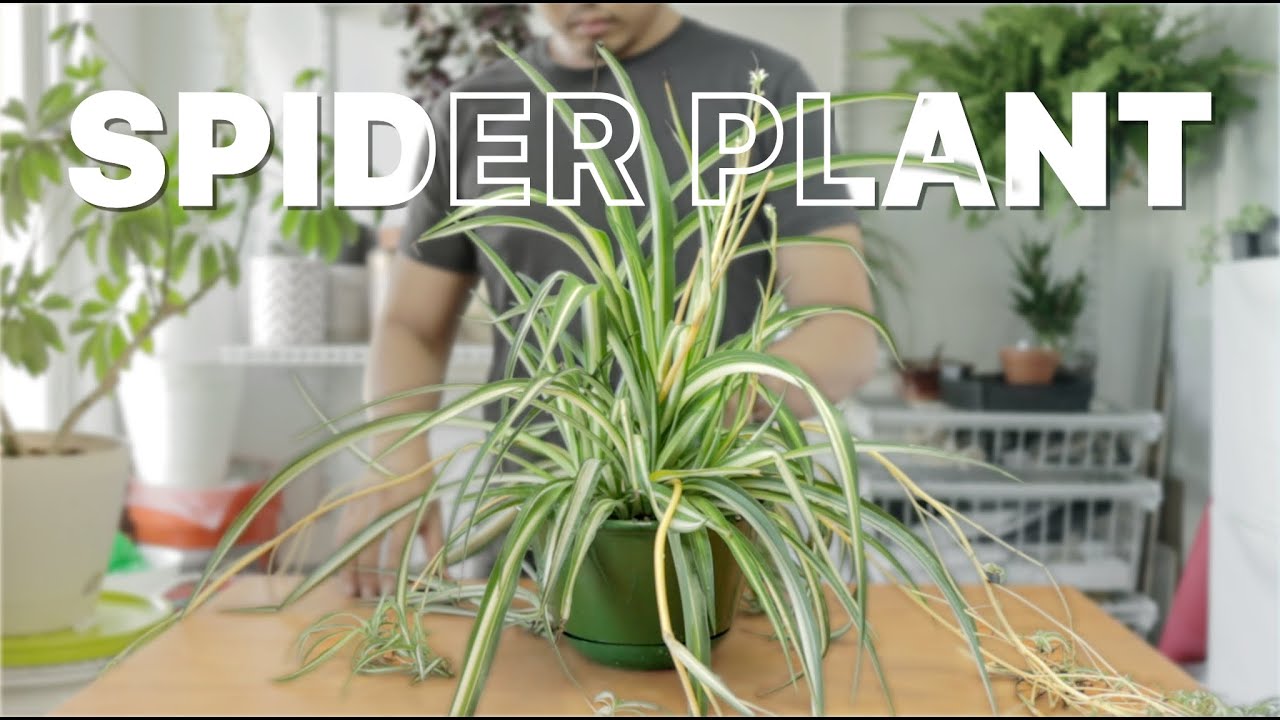
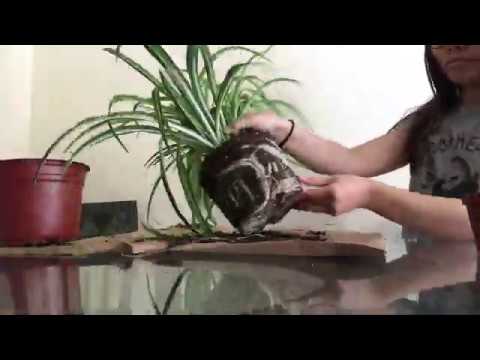
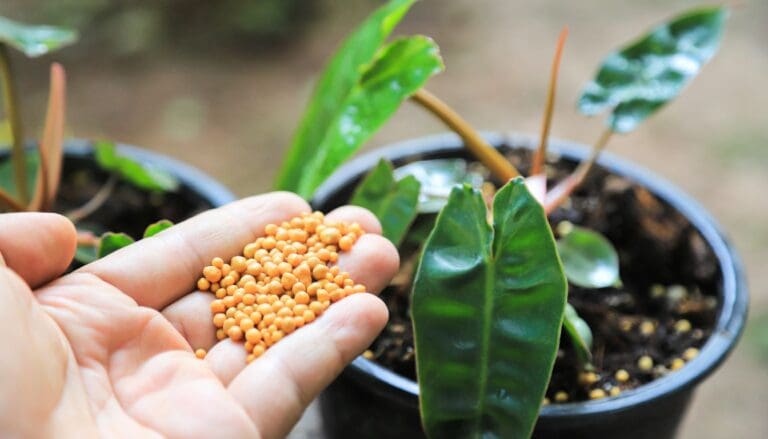

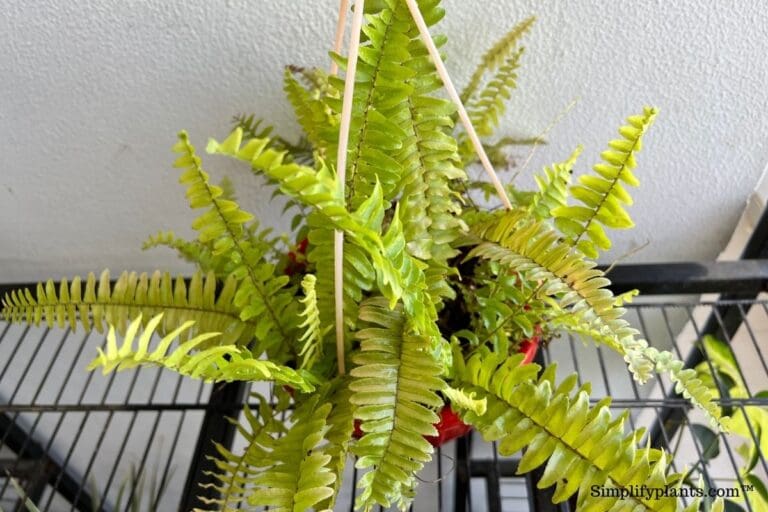

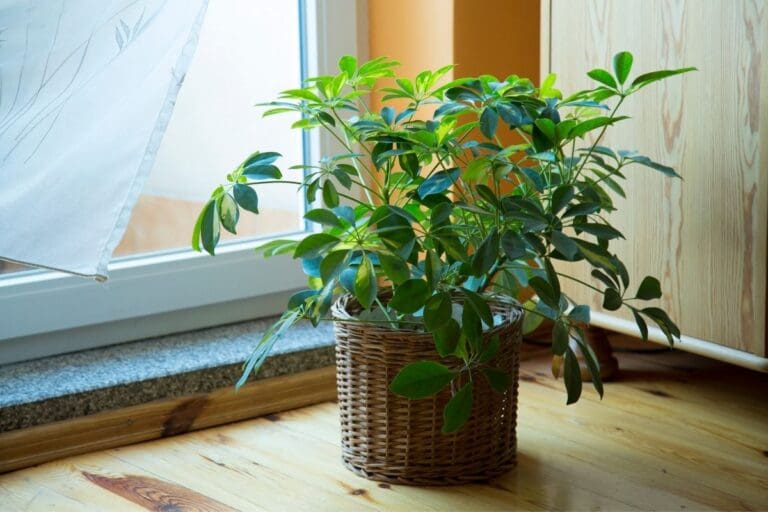
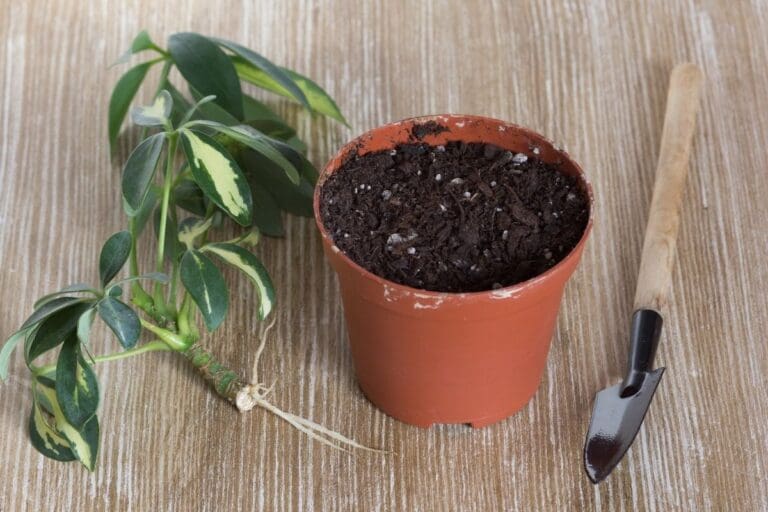
My verigated spider plant drops seeds after flowering, when planted they grow plain leaf / non variegated spider plants. Why is this?
Hi Sarah!
That’s a fascinating observation! Variegation in plants like your spider plant is often unstable and can revert to the more dominant green form when propagated from seeds. The variegated traits are a form of mutation, and these don’t always get passed down through seeds, which is why you’re seeing plain green offspring. For a higher chance of keeping the variegation, try propagating from the babies(small plant runners) instead of seeds.
Happy Gardening! 🌱🔍